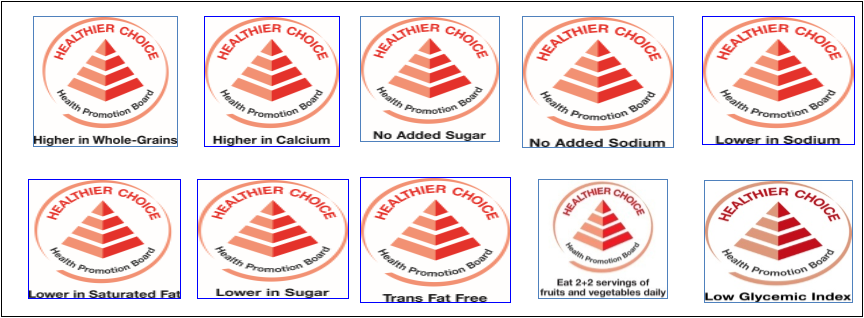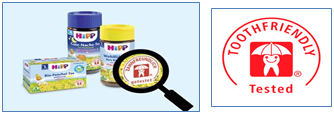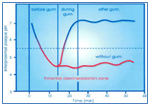Commentary
Volume 1 Issue 1 - 2016
Healthier Choice Symbols for Cariogenic Foods
1Department of Public Health Dentistry, Amrita Vishwa Vidya peetham, AIMS, India
*Corresponding Author: Naveen Jacob Varghese, Department of Public Health Dentistry, Amrita Vishwa Vidya peetham, AIMS, India.
Received: July 06, 2016; Published: October 03, 2016
Abstract
The main objective of the commentary is highlighting the importance of incorporating healthier choice symbols in cariogenic foods in India. By providing healthier choices or symbols to the food, consumers could be aware of the consequences of consuming such foods and they have the right to know about it. The Healthier Choice Symbols (HCS) on packaged food products indicates that there are healthier options, and this helps consumers to make informed food choices. Since dental caries are almost omnipresent among children and they are most vulnerable to Candy Culture, warnings, symbols, index should be provided in front of packs of cariogenic foods to prevent caries. Health claims and nutritional claims can also be provided on the cariogenic foods. Cariogenic food causes dental caries but no information is available to the consumer, and cannot make a choice, like in Gluten free foods, symbols warning are provided. Thus nutrition labelling provides point-of-sale information to help consumers make informed food choices. The warnings can be Cariogenic Potential of the foods and there should be cariogenicity testing of the products using a appropriate index to scale like those used in xylitilol based chewing gums using the Stephens Curve. This commentary discuss about need of the health choice symbols in the food which may cause the dental caries and an important public health measure for health promotion.
Keywords: Healthier choice symbols; Food labelling; Nutrient specific claims; Dental caries; Cariogenic foods; Tooth friendly logos
Introduction
Healthier Choice Symbols (HCS) help to make informed choices when choosing products in the supermarket and provides information on why the product is better for health [1]. Food labelling is defined as any written, printed or graphic matter that is present on the label, accompanies the food, or is displayed near the food, including the purpose of promoting its sale or disposal [2]. The main objective of food labelling is to recognise which information should appear on food products and to understand whether food products sold are currently exempted from many of the food labelling laws [3].
“Seeing the calories, fats, sugars and salt in a food at a glance can help patients check and compare similar products and choose those with fewer calories and less fat. The more they compare the products, the more they will be aware of what’s in the food they are eating- Nigel Danby” [4].
The Healthier Choice Symbols (HCS) on packaged food products indicates that there are better options, and thus helps consumers to make the right food choices. To make nutrition labelling more comprehensive, HPB (Health Promotion Board) from Singapore introduced, enhanced versions of the Healthier Choice Symbol, each of which focuses on a particular nutritional aspect of the product. Nutrient specific claims are mentioned below each logo. Each product will carry one of the six logos. Some products may carry two claims appropriate to the product should it satisfy the nutritional guidelines [1].

Figure 1: Shows enhanced versions Healthier Choice Symbols each of which focuses on a part
icular nutritional aspect.
The products carrying the logo “whole grain” helps in reducing the risk of heart disease, diabetes and certain cancers. The logo which claims “higher in calcium” contain at least 25% more calcium compared to similar products and the products carrying the logo “trans fat” contain no or negligible amounts of trans-fat i.e. less than 0.5g per 100g of the product. So also the logo “low Glycemic index” contain a Glycemic Index (GI) value of less than 55 and the foods carrying the logo “Eat 2+2 servings of fruits and vegetables” includes fresh fruits and vegetables [1].
Healthier Choice Symbol products are healthier than those without logo as they contain lesser sodium, saturated fat, sugar and, or free of trans fat, or higher in calcium, dietary fiber and whole grains. Though these HCS labelled foods are healthier than those in the similar food groups, all foods that are consumed in excessive amount can cause weight gain. Hence, even when eating foods with the HCS, consumption should be in moderation [1].
Dental caries is almost omnipresent among children and they are most vulnerable to candy culture. Warnings, symbols and index should be provided in front of packs of cariogenic foods to prevent caries. Cariogenic food causes dental caries but no information is available to the consumers and hence they cannot make a choice, like in gluten free foods, where warning symbols are provided. So also many are not aware of dental caries. Thus nutrition labelling provides point-of-sale information to help consumers make informed food choices. The warnings could be about cariogenic potential of the foods which means how fast the pH of the plaque goes below 5.5 on consumption. There should be cariogenicity testing of the products using an appropriate index to assess like those used in Wriggly xylitilol based chewing gums where Stephens Curve is used (figure 3). As there are no such warnings or symbols on these items, by providing the ingredient lists, percentage of sugars in food product the customer could be made aware about making the right choices. Only few developed countries are already labelling their candies, chocolates etc about the ill effects of dental caries. In Switzerland, products that are safe for teeth have tooth friendly label or logo. The label stands for tooth friendly quality according to clearly specified demonstrable criteria (figure 2).
Studies show that “Seven in ten Singaporeans were found to be aware of the Healthier Choice Symbol (HCS) and 69% had used this symbol to assist them in making healthier food choices” [5]. A systematic comparison of four front-of-pack labelling systems and their effect on judgments of product healthiness concluded that any structured and legible presentation of key nutrient and energy information on the front of the pack is sufficient. This would enable consumers to detect a healthier alternative within a food category when they are provided with foods that have distinctly different levels of healthiness [6].
A study conducted in India shows that nutrient information on labels was not often read and most consumers either lacked nutrition knowledge or found that the information was too technical to understand. It was also found that women were concerned about ‘fat’ and ‘sugar intake and read the nutrition facts [7]. The people were able to locate label information and identify symbols and few were able to calculate the number of servings in a study conducted in Africa [8]. Research carried out in the United Kingdom showed that frowning emotions on a white background decreased the perceptions of healthiness and tastiness of the cereal bar, but not the chocolate bar. Emotion labels yielded stronger effects on perceptions of taste and healthiness of snacks than colour labels. The frowning emotions were more potent than smiling emotions in influencing the perceived healthiness and tastiness of foods carrying health halos [9].
The healthier choice symbols (HCS) concept is included in the World Cancer Research Fund (WCRF) International nourishing policy repository as an example of "Nutrition label standards and regulations on the use of claims and implied claims on foods”. Promotion of healthier diets and reduction in obesity is also facilitated A variant of the HCS for snack foods, known as the Healthier Snack Symbol (HSS) has been recently introduced [5]. This category includes crisps and ice-cream.
With the growing interest among consumers, with respect to the link between diet and health, labelling plays a key role in consumers’ decision making. The regulatory environment governing the types of health claims that are permissible is critical, both for protecting consumers from fraudulent or misleading health claims, and for providing information that allows informed choices about foods with enhanced health attributes [10]. In developing nations like India use of healthier choices symbols for cariogenic potentiality of foods causing dental caries is a much required timely intervention. This would facilitate provision of informed choices to the consumers in order to safeguard their oral health.
References
- “Know the Difference in Goodness”. Health Promotion Board (2011).
- “Codex general standard for the labelling of prepackaged foods”. Health Promotion Board (2015).
- “Food Product Labelling”. Food- a fact of life (2012).
- Nigel Denby. “Food and drink labelling: A tool to encourage healthier eating a resource for healthcare professionals the Food”. Food Drink Fed.
- “Healthier Choice Symbol Programme”. Health Promotion Board.
- Hodgkins CE., et al. “Guiding healthier food choice: systematic comparison of four front-of-pack labelling systems and their effect on judgements of product healthiness”. Bristish Journal of Nutrition 113.10 (2015): 1652–1663.
- Vemula SR., et al. “Use of food label information by urban consumers in India - a study among supermarket shoppers”. Public Health Nutrition 17.9 (2014): 2104–2114.
- Van der Merwe D., et al. “Consumers’ knowledge of food label information: an exploratory investigation in Potchefstroom, South Africa”. Public Health Nutrition 16.3 (2013): 403–408.
- Vasiljevic M., et al. “Making food labels social: The impact of colour of nutritional labels and injunctive norms on perceptions and choice of snack foods”. Appetite (2015): 56–63.
- Helen Z and Hobbs J. “The Role of Labelling in Consumers’ Functional Food Choices”. European Association of Agricultural Economists (2010).
Citation:
Naveen Jacob Varghese., et al. “Healthier Choice Symbols for Cariogenic Foods”. Oral Health and Dentistry 1.1 (2016): 4-7.
Copyright: © 2016 Naveen Jacob Varghese., et al. This is an open-access article distributed under the terms of the Creative Commons Attribution License, which permits unrestricted use, distribution, and reproduction in any medium, provided the original author and source are credited.





































 Scientia Ricerca is licensed and content of this site is available under a Creative Commons Attribution 4.0 International License.
Scientia Ricerca is licensed and content of this site is available under a Creative Commons Attribution 4.0 International License.